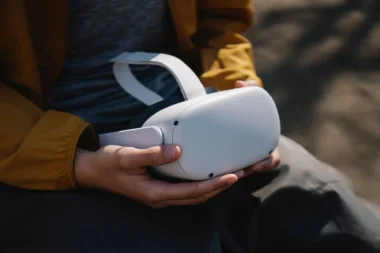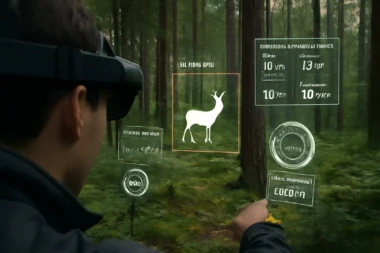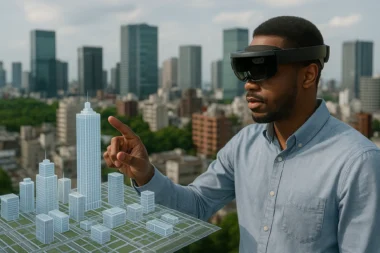Introduction
Virtual reality (VR) has revolutionized surgical training by providing medical professionals with immersive and realistic simulations that enhance their skills and proficiency. In this article, we delve into the step-by-step process of a VR surgical training platform and explore how it provides haptic feedback and realistic simulations to medical professionals.
Step 1: Hardware Setup and Calibration
The VR surgical training platform begins with the setup of the necessary hardware components. This typically includes a high-quality VR headset, hand-tracking devices or controllers, and haptic feedback devices such as gloves or specialized controllers. The hardware is calibrated to ensure accurate tracking of the user’s movements and gestures, enabling precise interaction within the virtual environment.
Step 2: Virtual Operating Room Creation
Once the hardware setup is complete, the VR surgical training platform creates a virtual operating room environment. This environment is meticulously designed to replicate an operating room’s physical characteristics and features, including surgical tools, instruments, anatomical models, and patient scenarios. Realistic graphics and physics-based interactions contribute to a convincing and immersive simulation.
Step 3: Haptic Feedback Integration
The VR surgical training platform incorporates specialized devices into the training setup to provide haptic feedback. These devices are designed to simulate the tactile sensations experienced during surgical procedures. For example, haptic gloves may feature small actuators that apply pressure or vibrations to specific areas of the user’s hands, replicating the feel of holding surgical instruments or manipulating tissues. This haptic feedback enhances the realism of the training experience, allowing medical professionals to develop a sense of touch and fine-tune their motor skills.
Step 4: Realistic Simulations and Scenarios
The core of the VR surgical training platform lies in its realistic simulations and scenarios. These simulations are designed to mimic real-world surgical procedures, providing medical professionals with diverse techniques to practice and master their skills. The platform leverages high-fidelity anatomical models, accurate physics simulations, and dynamic interactions to create a lifelike surgical environment.
Medical professionals can perform procedures such as suturing, tissue dissection, or organ manipulation while receiving real-time feedback on their performance. The platform may include interactive tools that allow users to select and manipulate surgical instruments, interact with virtual tissues, and respond to simulated physiological responses. This level of interactivity and realism enables medical professionals to develop critical decision-making skills, refine their techniques, and adapt to unexpected situations.
Step 5: Performance Assessment and Feedback
The VR surgical training platform often incorporates performance assessment tools to evaluate and provide feedback on the trainee’s performance. These tools analyze various aspects of the user’s actions, including accuracy, speed, precision, and adherence to proper surgical techniques. Performance metrics and feedback can be presented in real-time or as a post-session analysis, providing trainees with valuable insights into their strengths and areas for improvement. This feedback loop helps medical professionals track progress, set goals, and continuously enhance surgical proficiency.
Technology and algorithms used
1. Virtual Reality (VR) Technology: VR technology creates a computer-generated virtual environment that simulates the physical world. It uses a high-quality VR headset that provides a 360-degree view and immerses the user in the virtual environment. The headset tracks the user’s movements, allowing them to look around and interact with the virtual operating room.
2. Hand-Tracking Technology: Hand-tracking technology is critical to VR surgical training platforms. It captures the movements and gestures of the user’s hands in real time, allowing for realistic interaction within the virtual environment. This technology may utilize depth-sensing cameras, infrared sensors, or other tracking methods to track the user’s hand movements accurately.
3. Haptic Feedback Devices: Haptic feedback devices provide tactile sensations to the user’s hands, mimicking the sensations they would feel during surgical procedures. These devices can include haptic gloves or specialized controllers that apply pressure, vibrations, or other tactile feedback to simulate the sense of touch. This technology enhances the realism of the training experience and allows users to develop an understanding of touch and refine their motor skills.
4. Physics Simulation: Physics simulation algorithms are employed to simulate the behavior of objects and tissues within the virtual operating room. These algorithms calculate the interactions between virtual surgical instruments, anatomical models, and tissues, providing realistic physics-based feedback. The simulation considers forces, friction, collisions, and deformations, ensuring accurate and fundamental surgical interactions.
5. Gesture Recognition and Machine Learning: Gesture recognition algorithms are used to interpret and recognize the gestures and hand movements performed by the user. These algorithms analyze the data captured by the hand-tracking technology and classify the gestures into different predefined actions. Machine learning techniques, such as deep learning algorithms, can train the system to accurately recognize a wide range of hand gestures.
6. Real-Time Rendering: Real-time rendering technology generates and displays the virtual environment in real-time. It involves rendering high-quality graphics, textures, and lighting to create a visually immersive and realistic virtual operating room. This technology ensures that the user’s actions and interactions within the virtual environment are reflected immediately, providing a seamless and responsive training experience.
7. Performance Assessment and Feedback Algorithms: Performance assessment algorithms analyze the user’s actions and interactions within the virtual environment to provide objective feedback on their performance. These algorithms can measure accuracy, speed, precision, and adherence to proper surgical techniques. These algorithms’ feedback enables medical professionals to keep track of their advancements, pinpoint areas for improvement, and hone their surgical abilities.
Conclusion
The VR surgical training platform offers medical professionals a comprehensive, immersive training experience by providing haptic feedback and realistic simulations. Through careful hardware setup, calibration, and integration of haptic devices, the platform recreates the tactile sensations encountered during surgical procedures. Incorporating realistic simulations and scenarios enables medical professionals to practice their skills in a risk-free environment while receiving performance assessments and feedback. This combination of haptic feedback and realistic simulations empowers medical professionals to refine their techniques, enhance their decision-making abilities, and ultimately improve patient outcomes in the real-world operating room.



